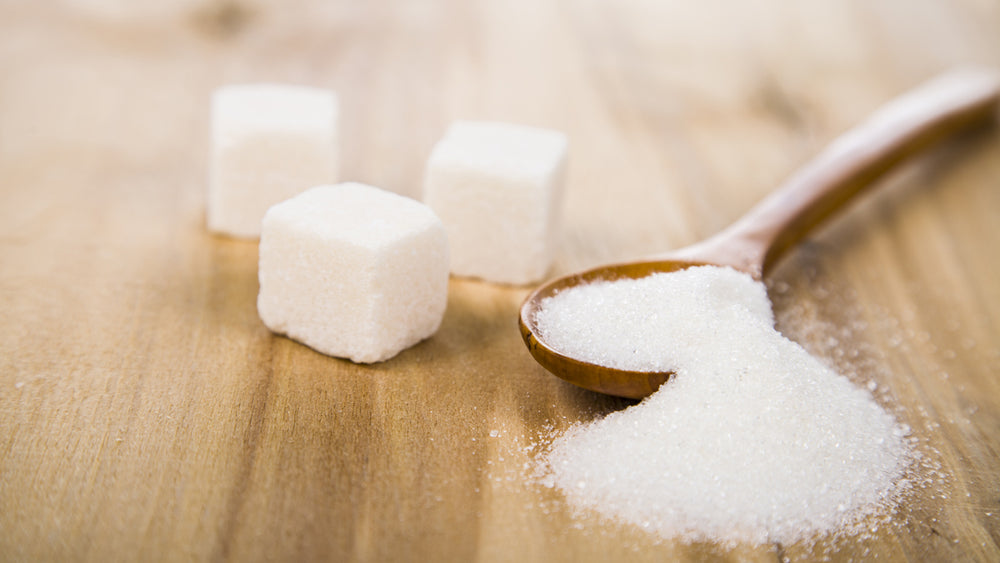How Sweet it is to Absorb Sucrose, But What if you Can’t?
I once had a client who was diagnosed with sucrose malabsorption; listening to how much her life had been impacted was heartbreaking. She felt trapped in her own house, unable to travel without fear of having an accident. She would have to find the restroom immediately anytime she was brave enough to venture out.
She was to the point of having to wear incontinence undergarments to feel comfortable enough to go to the grocery store, only to face the aisles of food she was afraid to eat. She was at the point of desperation when we first met and was willing to do anything to get back to the life she once had before developing this condition, so we got to work.
Understanding Sucrose Malabsorption: Causes, Symptoms, and Impact on Quality of Life
Sucrose malabsorption is becoming a more common diagnosis that can develop due to damage to the gastrointestinal tract from IBS, Celiac disease, or small intestine bacterial overgrowth (SIBO). This can also be a congenital disorder that you are born with.
In either case, your body does not produce enough of the enzyme sucrase, which is used to break down sucrose properly.
Symptoms that occur after sucrose ingestion include excess gas production, bloating, cramping, and diarrhea. Like other digestive problems, malnutrition can occur, as can a decreased quality of life.
Sucrose is a disaccharide, meaning it consists of two sugar units: glucose and fructose. The enzyme sucrase breaks down sucrose into the two individual sugar molecules that are absorbed and used for energy production and storage. Sucrose is commonly known as table sugar, primarily from sugar cane, beets, and processed foods.

When you have sucrose malabsorption, you can consume individual sugar molecules (monosaccharides) since they are already separated and do not require the enzyme for breakdown. Those with congenital sucrose malabsorption may be prescribed oral solution enzyme replacement therapy.
Managing Sucrose Malabsorption: Dietary Strategies and Elimination Protocols
For those who have developed this malabsorption, dietary changes are one of the best options for symptom management.
Start with maintaining a food diary to track the foods eaten and the amounts consumed. This is important to understanding triggers and appropriately removing those foods from your diet. Next, follow a two-week elimination diet specifically focused on removing sugars and starches to calm inflammation and obtain better results. After the two-week elimination period, start reintroducing starchy foods. You will only reintroduce one food at a time and space reintroduction by three to five days.
The website www.sucroseintolerance.com has a comprehensive list of low-sucrose, low-starch foods to choose from. Another elimination diet can be the Low FODMAP diet, as consumption of fermentable sugars may continue to inflame your GI tract, causing unnecessary symptoms, flare-ups, and inconclusive results of all of your hard work.
Learning to read nutrition labels and what to look for is also key to making appropriate food choices.
Success Stories: Overcoming Sucrose Malabsorption with Nutrition and Lifestyle Changes
Elimination diets are never fun, very hard to adhere to, and often need to be nutritionally complete, but they can offer loads of benefits. The client I referred to was determined, focused, and strictly followed an elimination diet. She maintained a food diary and would bring it and actual foods to her appointments so we could review the nutrition label together.
We eventually were able to determine the specific amount, in grams, of sucrose she could consume per day to remain symptom-free, have sweets, and eat them too. Because of her efforts, she was highly successful. She was able to find foods that she could enjoy and eat without fear. Over time, she was back to her ideal weight, started going back to her yoga class, and, to her delight, was able to travel again.
- Center for Food Safety and Applied Nutrition. (n.d.). How to understand and use the nutrition facts label. U.S. Food and Drug Administration. https://www.fda.gov/food/nutrition-facts-label/how-understand-and-use-nutrition-facts-label




















Comments
Allison Koch, PhD, RDN- Editor in Chief
02/05/2024 at 09:05 AM
Hi Navya, I am so sorry to hear this. I recommend reaching out to your primary care physician or, if you have one, your gastroenterologist. They can recommend specific tests to rule out or confirm sucrose malabsorption.
Navya
02/05/2024 at 08:57 AM
I’m facing this problem from 8years I don’t know the exact doctor who gives the medicine means sucrase if u know plz kindly suggest me I’m dying with this I’m unable to bear this itchy bloating it is is very painful plz help me and guide me to the exact doctor
Join The Conversation...